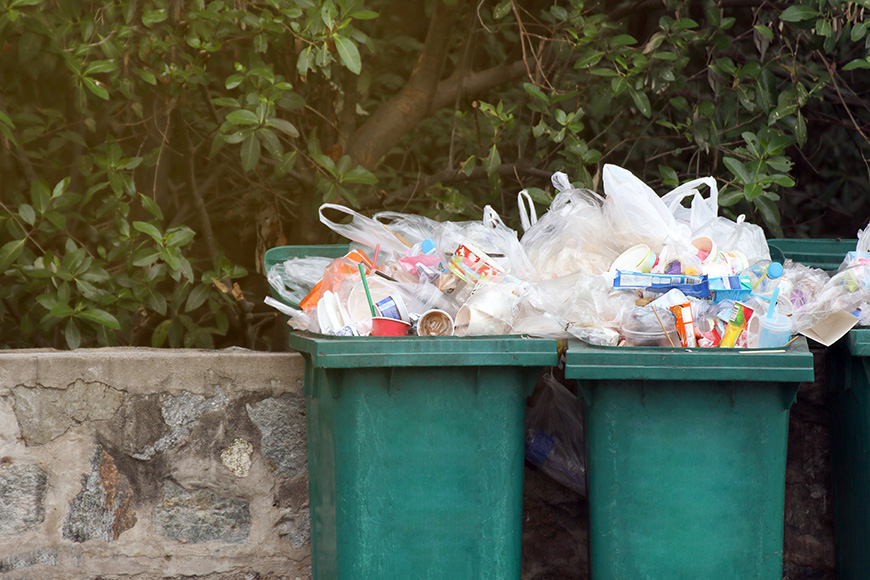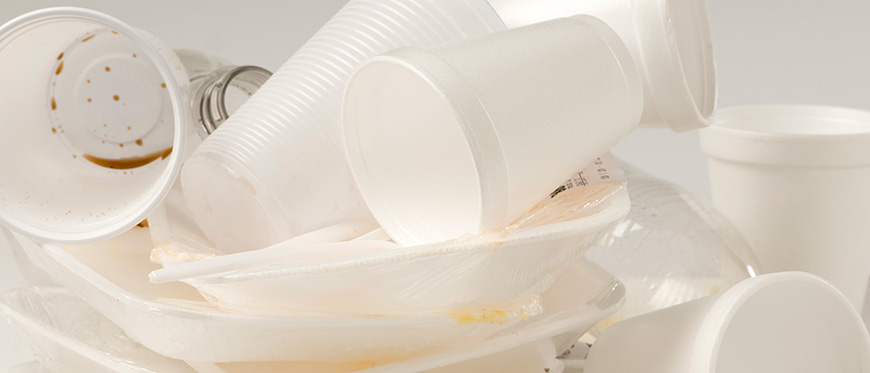Takeout has been the next-best thing to a silver lining for the restaurant industry during COVID-19, but now one factor threatens to tarnish its sterling image: plastic waste.
Shortly before the pandemic hit, the World Wildlife Federation projected a 40% increase in plastic pollution over the next decade.1 The COVID-driven surge in takeout has made consumers and restaurants become more dependent on single-use plastic bags, containers and utensils due to health concerns prompted by the pandemic. As we continue to understand the impacts of plastic on the health of our planet, it is increasingly clear that we need to quickly move away from single-use plastics.
Sustainability is still part of sustaining the restaurant industry
Consumers want to support restaurants – but they still care about environmental impact. A survey conducted by the global consulting firm Kearney found that nearly half say the pandemic has made them more concerned about it, equating their own health with that of the planet, and 85% are committed to declining plastic utensils with their to-go orders.2 The challenge for restauranteurs, then, is to leverage the lifeline that is takeout while tapping into the consumer commitment to sustainability. Here are three key considerations.
1. Examine the alternatives to plastics
Over the last several years, given consumer interest and a growing number of local bans on single-use plastics, new options for takeout packaging have emerged. Compostable bowls, plates and serviceware, made from plant-based “bioplastics,” are gaining in popularity, and even mandated by ordinance in cities like San Francisco and Seattle.3
Be aware, though, that currently available options are not consumer-compostable – that is, they can’t just be tossed into the backyard compost bin. As the vast majority of industrial composting plants refuse to process this type of packaging, 3 it may still end up as landfill.
Restaurants will be wise, then, to look into local regulations before purchasing compostables – and if they are not required, to consider switching to more traditional recyclables or reusables where possible, such as substituting paper bags for plastic.

2. Make your customers partners in your anti-waste efforts
Of course, it’s not just your choice of materials that matters – it’s also your customers’ choices, especially their choice not to use utensils and other typically standard takeout items. Restaurants should give consumers the choice – in apps and other ordering materials – to decline plastic utensils and plates. This will not only reduce waste, but also clearly signal to your customers, up front, that your business is as conscious of and committed to the environment as they are.
3. Think beyond the bag when it comes to sustainability and takeout
While there’s a temptation to think only about what’s in the bag when it comes to takeout, restaurants are wise to take a wider view. Waste reduction and sustainability are part of the picture – but consider the above-mentioned research finding that consumers’ concerns about their own health are related to that of the planet. In these days of COVID-19, that means you need to be mindful of communicating the full range of your health, hygiene and sustainability efforts.
Detail your hygiene protocols on your website, and make sure customers can’t miss them on their way to ordering. Emphasize efforts both familiar (e.g., hand hygiene, as practiced by your staff) and unfamiliar (e.g., the use of disposable wipes, rather than rags, to prevent cross-contamination in the kitchen) that you’re making to ensure the health of your customers. And consider providing reassuring reminders right along with the takeout order – custom-printed napkins can both reinforce your brand and help highlight your health, safety and sustainability efforts.
Look for expert resources to get you through
Even with local dining restrictions easing up across much of the country, the restaurant category is far from being back to normal. In August of 2020, research conducted by Datassential and the International Foodservice Manufacturers Association forecasted just a 7.4% increase in business during 2021, against a projected 2020 decline of 28%. Reducing take out waste is but one component for restaurants that want to survive, and even thrive, during this challenging time.4 For more ideas, turn to new resources provided by industry experts, such as the “Reach for the Stars Report” that shares many practical ways to leverage sustainability for sustained success, and “Safe at Work: COVID-19 Foodservice Toolkit.”
Sources
1 CBNC: Plastic waste surges as coronavirus prompts restaurants to use more disposable packaging
2 FoodDive: Consumers still care about sustainability amid pandemic, report finds
3 GreenBiz: Plastic to-go containers are bad, but the alternatives might not be better
4 IFMA: IFMA publishes 2021 foodservice industry forecasts
